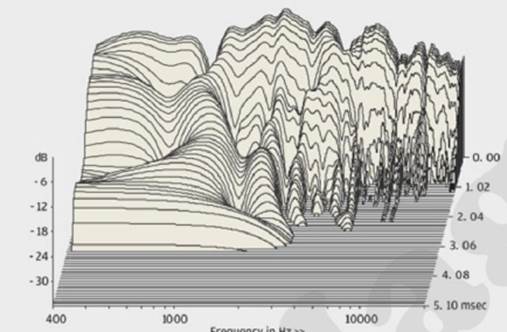A show of fireworks
Attesting to the resolving power of the
Marvels, despite their limited bandwidth, they proved more than adequate to the
task of revealing the sonic superiority of Reference Recordings’ high resolution
‘HRx’ 24-bit/176.4kHz master files.
When reproducing the startling dynamic
drama of the Minnesota Orchestra under the baton of Eiji Oue, captured on the
album Exotic Dances From The Opera (Reference HR-48 HRx), the speakers once
again threw an enormous soundstage while recreating the power and scale of the
orchestra with fair success. The timpani blows were suitably visceral,
pressurizing the room without obscuring low-level details or appearing to
artificially bloat the image size. Meanwhile, brass and percussion sounded
notably crisp and vivid, the Marvels seemingly disposed to revel in the sonic
fireworks of this top-drawer recording and, again, displaying commendably
little compression even during the loudest scored passages.
Calling the tune
TuneAudio’s speaker designs reflect the
passion of company proprietor Manolis Proestakis. Considerably larger than this
Marvel model is the 75kg 3-way Anima, that employs a 15in woofer coupled with a
5in horn-loaded midrange driver and 1in HF compression unit. TuneAudio also
manufacturers a behemoth of a subwoofer it calls Pulse. Weighing 95kg this is
an active design with inbuilt 100W Class D amplifier.
Says Manolis: ‘We believe that horn
loudspeakers are the best to reproduce the recorded arts. Properly implemented,
horns will exhibit high efficiency, low distortion, huge dynamic range and
controlled directivity. Our designs will deliver all those qualities and bring
you as close to the recording as possible’. Countless speaker designers might
disagree, of course, as will most recording and mastering engineers – or they’d
all be using horn transducers for monitoring. Nevertheless there’s no denying
the engaging sound quality of horns that many enthusiasts simply can’t live
without.

TuneAudio’s
speaker designs reflect the passion of company proprietor Manolis Proestakis
The verdict
This Greek horn loudspeaker is immaculately
finished, and it offers much to enjoy in image scale and musical dynamics. It’s
a loudspeaker that proves hugely engaging thanks to its fast, vivid delivery.
Although its limited bandwidth and tonal aberrations would preclude it from
consideration as a hi-resolution monitor, horn speaker fans will surely love it
– especially as it’s so competitively priced.
Sound quality: 72%
Lab report
TuneAudio Marvel
TuneAudio claims a high 97dB sensitivity
for the Marvel but our measurements, which recorded an average pink noise
sensitivity of 93.9dB, suggest that this is about 3dB optimistic. With the
recommended amplifier power of ~5W, this equates to peak SPL capability at 1m
of just 101dB, which will only suffice for small-scale or low dynamic range
music programmer. For larger-scale works, more amplifier power will be needed
to achieve semi-realistic listening levels.
The good news for partnering amplifiers is
that the Marvel does not use low impedance to achieve this – the nominal
impedance of 8ohm accords well with our measured minimum modulus of 6.8ohm, and
although impedance phase angles are high, the minimum EPDR is a friendly 3.6ohm
at 42Hz, making the Marvel an easy load to drive. Less good news from the
impedance measurement is the appearance of multiple peaks in the lower midrange
resulting from a series of resonant modes in the poorly terminated, and un-damped,
rear horn.
On-axis response errors of  7.5dB and
7.5dB and  10.0dB (200Hz to 20kHz) – measured 1m from the floor, in line with
the cabinet edge to which the tweeter horn is attached, with the tweeter horn
pointed towards the microphone – are disappointing, but not so disappointing as
the
10.0dB (200Hz to 20kHz) – measured 1m from the floor, in line with
the cabinet edge to which the tweeter horn is attached, with the tweeter horn
pointed towards the microphone – are disappointing, but not so disappointing as
the  12.1dB pair matching error resulting from larger disparities at
upper-mid and lower treble frequencies. The better sample is characterized by
excess presence band output and denuded high treble (red trace). Despite this,
the cumulative spectral decay waterfall is quite clean although remember those
resonances in the bass horn, which aren’t resolved in this measurement.
12.1dB pair matching error resulting from larger disparities at
upper-mid and lower treble frequencies. The better sample is characterized by
excess presence band output and denuded high treble (red trace). Despite this,
the cumulative spectral decay waterfall is quite clean although remember those
resonances in the bass horn, which aren’t resolved in this measurement.

The
Marvels’ forward response(s) differed dramatically between ‘Left’ and ‘Right’
samples

‘Cabinet’
modes are minimal but stronger resonances in the bass horn are not illustrated
here
|
Specifications
·
Sensitivity (SPL/1m/2.83Vrms –
Mean/IEC/Music): 92.5dB/93.9dB/94.7dB
·
Impedance modulus min/max (20Hz-20kHz): 6.8ohm
@ 99Hz – 82.8ohm @ 26Hz
·
Impedance phase min/max (20hZ-20kHz): -60o @
32Hz – 59o @ 21Hz
·
Pair matching (200Hz-20kHz):  12.1dB 12.1dB
·
LF/HF extension (-6dB ref 200Hz/10kHz): 67Hz /
30.0kHz/27.8kHz
·
THD 100Hz/1kHz/10kHz (for 90dB SPL/1m): 1.4% /
0.6% / 0.3%
·
Dimensions (HWD): 1490x320x560mm
|